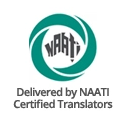Uncovering Ancient Roots
Unlike most European languages that stem from the Indo-European family tree, Estonian boasts a fascinatingly different lineage. It belongs to the Finno-Ugric branch of the Uralic language family, sharing a common ancestor with Finnish, Hungarian, and several other languages spoken across northern Eurasia. Remarkably, experts believe Estonian speakers arrived in Estonia a staggering 3,500 years ago, bringing their distinct language and establishing roots that continue to flourish today.
Where Estonian Thrives
Estonian is spoken by over 1.1 million people worldwide. In Estonia, it is the official language, and is spoken by approximately 922,000 people, and by 160,000 by communities abroad. These mainly include neighboring Finland, Russia, and Sweden. These communities act as guardians of the language, preserving its heritage and ensuring its survival beyond Estonia’s shores.
Different Dialects
Estonian has two main dialects: Northern Estonian and Southern Estonian. Northern Estonian, spoken primarily in northern Estonia and on the islands, serves as the foundation for standard Estonian, the country’s official language. Southern Estonian, spoken in southern Estonia and parts of Latvia, exhibits more variation compared to Northern Estonian.
Intricate Structure
Estonian boasts a unique grammatical structure that sets it apart from many European languages. Unlike English, nouns possess fourteen cases. These cases act like grammatical tags, precisely indicating a noun’s role within a sentence. For instance, the case ending specifies whether a noun is the subject (nominative case), the object of a verb (accusative case), or shows possession (genitive case). This feature eliminates ambiguity and simplifies sentence structure compared to languages with fewer grammatical cases.
Adding another layer of complexity, Estonian employs a system known as vowel harmony. This system dictates that vowels within a word must belong to a specific group (front vowels like ‘i’, ‘e’, ‘ä’ or back vowels like ‘u’, ‘o’, ‘a’) to create a harmonious sound.
Cultural and Literary Influence
Estonian forms the cornerstone of Estonian culture, serving as the primary vehicle for literary expression. A rich tradition of folk tales, passed down through generations, continues to captivate audiences. The national epic poem “Kalevipoeg” from the 19th century is a prime example. Written entirely in Estonian, it transports readers to a world of heroes and mythical creatures.
Estonian music thrives in its native tongue as well. Traditional folk songs, known as “Regilaulud,” are often incorporated into modern pop music, ensuring the language resonates with all ages. This deep connection between language and culture makes Estonian a powerful symbol of Estonian national identity.
Embracing the Future
In today’s globalized world, Estonian faces challenges, particularly due to the dominance of English. However, Estonia actively preserves its language through various initiatives. Estonian remains the primary language of education and administration within the country, ensuring its continued presence in public spheres.
As Estonia embraces the digital age, online resources and platforms dedicated to Estonian learning are flourishing. This ensures the language’s accessibility for future generations, allowing them to connect with their heritage and preserve their language.
Estonian Translation Services by TranslateSwift
At TranslateSwift, we understand the importance of clear and concise communication across languages. Whether you require Estonian to English translation or vice versa, our team of expert linguists is here to help. We are dedicated to providing accurate, reliable, and culturally sensitive translations for all kinds of documents.
